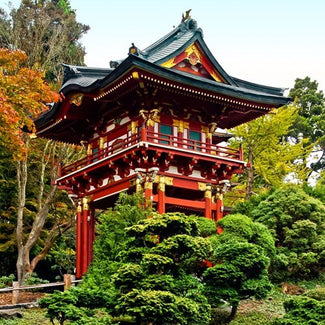
The Historical Origins Of Tea In The East
Interested in learning more about the historical origins of tea in the East? We’ve taken a look at some of the cultural references.


Legend tells of the Chinese emperor Shennong who lived around 5,000 years ago having discovered the use of tea leaves as a tasty and reinvigorating drink. Shennong was a highly regarded leader and teacher of important agricultural skills and techniques.
The story goes that Shennong used to prefer the water he drank to be boiled first to ensure that it was clean.
One day whilst travelling with his armies he stopped to rest for refreshments and whilst his drink was being prepared a leaf fell from a nearby tea bush, unnoticed by his servants. Shennong drank the resulting tea and promptly felt its health-stimulating qualities.

Healing Benefits Of Tea
This practice spread throughout China as more and more people began to appreciate the healing benefits of tea. One particular type of tea called Da Hong Pao (which translates as “Big Red Robe”) got its name when a Ming Dynasty emperor’s mother was gravely ill, and a single cup of this tea was made for her which immediately after drinking, she felt better. The emperor, being extremely grateful, took lots of a rare red cloth and covered the trees to protect it over the winter months.
The popularity of drinking tea was helped to spread to the common people by the customs and practices of Buddhist monks.
In particular, a Chan Master during the Tang Dynasty would practice meditation for days on end without eating or sleeping, only drinking tea. Many everyday people would learn from his teachings and techniques and take this back to their communities where it spread to the point where tea drinking gradually became a custom.




It’s not surprising that these customs took root. Practising meditation techniques gives many people methods to relax and reap the benefits of a calm and focused mind.
It’s not only drinking tea itself that can help with meditation, but also the preparation behind it. Meditation is the act of focusing the mind on something, even if that something is as seemingly simple as making a cup of tea.
This is something that you can try yourself. By simply making a cup of tea and breathing in the aroma, slowly and deliberately being aware of each step of the process can help slow the mind, grounding you in a sense of being in the here and now.
Here is a simple method you can practice at any time of the day.
1. Prepare a cup and set it aside to be used.
2. Select which tea you’re going to use, and then boil a kettle.
3. Whilst the water is boiling, take these few moments to clear your mind and focus on the in and out motion of your breathing. Slowly breathe through your nose and out through your mouth. This action alone is a great way to feel relaxed and calm.
4. Carefully, with your full attention, put the tea in to the cup ad pour the water over it.
5. Allow the tea to brew for a few minutes, and return to thoughtfully focusing on your breathing.
6. Enjoy the tea, and with every sip remain focused on the experience and savour the aroma and taste.


Practising Meditation Techniques
By focusing on moments like this, or by taking time to do something like mindfully focusing on your breathing it can feel less like life is speeding by and instead, and that the present is all important and should be cherished.
